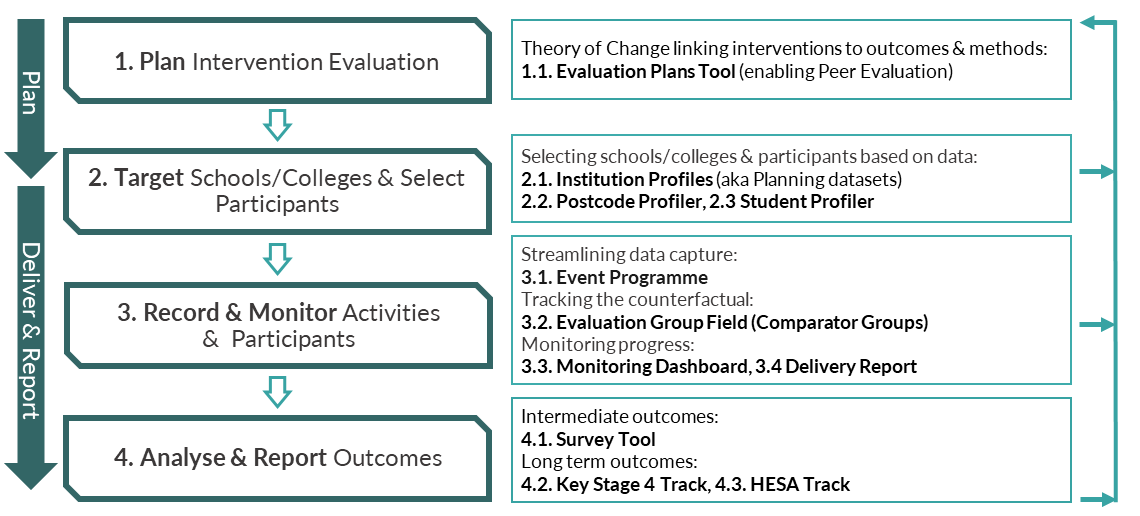The HEAT system supports members to develop, deliver and report on their Access and Participation Plans (APPs). The tools and datasets we offer support all stages of the work Providers must do for their APPs, from evaluation planning, to recording the data that underpins monitoring and evaluation, to providing the outcomes for that evaluation and to report progress towards your APP targets. When embedded within your Institution, HEAT can support you with all stages of your APP reporting.
As the Office for Students (OfS) have focused on significantly increasing the “volume and quality of evaluation”, HEAT have responded to this challenge by considering how this relates to the planning of evaluation. Providers must submit detailed Plans for each Intervention Strategy including a theory of change linked to interim and longer-term outcomes, as well as information on how each outcome will be monitored and evaluated, including details on the methodologies. The HEAT system provides the tools to meet these requirements.
The diagram below shows four broad stages involved in developing and delivering an APP. Starting with the Planning of an intervention’s evaluation, with this being the stage that will capture much of the information the OfS require in terms of evaluation planning. The next three stages relate to delivering that plan, Targeting appropriate schools and colleges based on institution profile data, then Recording Student and Activity records and Monitoring that data to ensure delivery is on track, and finally Evaluating student outcomes. The tools and features within HEAT that align with each stage are listed to the right (1.1 to 4.3).
The green arrows on the right illustrate how all four stages are linked and any evaluator will need to refer back to data from earlier stages as they move through the steps. For example, evaluation plans should sit alongside data for monitoring and evaluation so that they can be consulted once the anticipated data becomes available. It therefore makes sense to store all data on the HEAT system, so that the information and data captured under each stage can be easily linked. Key fields on HEAT’s Activity record such as the Descriptor and/or Programme Title fields can be used to integrate data recorded at each stage.

Figure 1: HEAT’s Tools & Features to support the development and reporting of APPs
Supporting guidance for HEAT’s tools and features relevant to APPs
The following supporting guidance is available to members for each of HEAT’s tools and features listed in Figure 1 (Member access only; HEAT login required).


